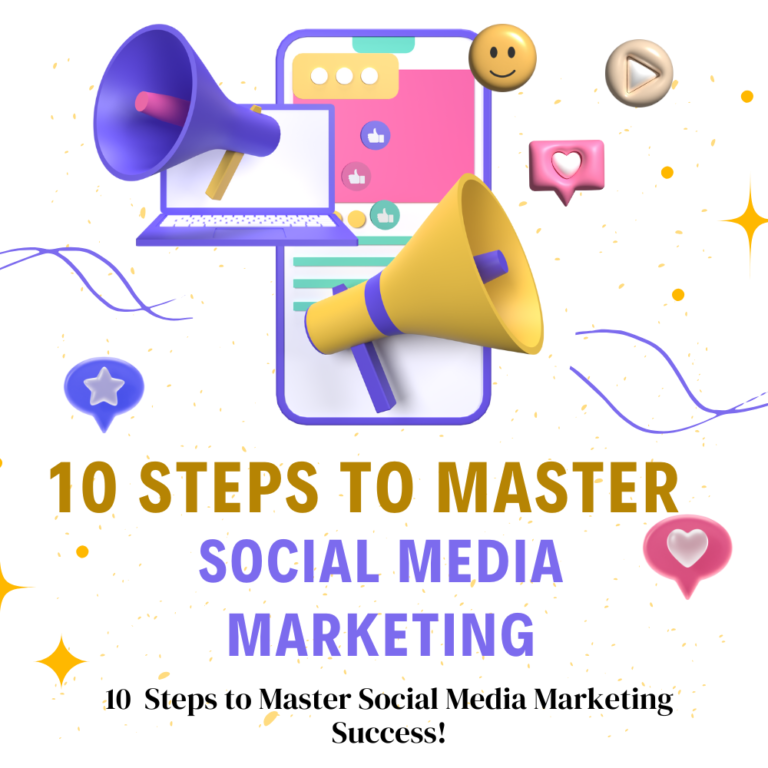Effective Video Marketing for Every Brand
Introduction
Consumers are watching—and wanting—more video content from brands than ever before. Whether it’s a quick social post or a product demo, video marketing allows businesses to share engaging stories that create real connections.
Video marketing has emerged as a must-have strategy, with 85% of consumers expressing a desire to see more video content from brands.
As platforms like YouTube, Instagram, and TikTok dominate online spaces, video lets businesses share their stories in powerful, unforgettable ways.
Let’s dive into how you can leverage video marketing to captivate your audience and make a lasting impact!
What is Video Marketing?
Video marketing is a strategy that involves creating and sharing videos to promote a brand, product, or service.
Unlike traditional text or image-based content, video brings a powerful combination of visuals, sound, and storytelling to capture audience attention and effectively convey messages.
Whether it’s a 15-second social media clip, a live Q&A, or an in-depth product tutorial, video marketing spans a wide variety of formats tailored to audience needs.

Why Video Marketing is Your Brand’s Best Bet
In today’s content-saturated digital world, video marketing isn’t just a nice-to-have; it’s a must-have.
Video content helps brands stand out by creating an emotional connection and delivering messages in a memorable way.
But with so many companies leveraging video, how can you make sure your content doesn’t get lost in the noise?
Key Elements of Video Marketing
- Content Type: The goal of a video largely defines its content type. Videos can be educational (tutorials or how-to), entertaining, promotional, or a combination. Aligning content type with business goals helps ensure relevancy and engagement.
- Platform: Each social platform caters to a unique audience and content style. While YouTube is ideal for long-form videos, Instagram and TikTok thrive on short, catchy clips. Selecting the right platform enhances your reach and effectiveness.
- Target Audience: Knowing your audience is crucial for video success. A video tailored for young adults on TikTok will look different from a professional video on LinkedIn targeting industry leaders. Audience targeting ensures that your message resonates.
- Quality: High production quality increases credibility and engagement. Lighting, sound, visuals, and editing play a key role in capturing attention, especially given the saturation of content online.
- Call to Action (CTA): A CTA encourages viewers to take the next step, whether that’s subscribing, clicking a link, or making a purchase. This is essential for guiding viewers further down the conversion funnel.
Benefits of Video Marketing
- Higher Engagement Rates
Videos are more engaging than text and images, making them more likely to be shared and commented on. According to Wyzowl’s research, videos improve engagement rates across all platforms. - Improved SEO
Videos increase the time users spend on a website, which signals search engines that your content is valuable. Video content can also appear in Google’s search results, increasing your brand’s online visibility. - Enhanced Brand Trust
Videos allow brands to build trust and show authenticity. For instance, testimonials and behind-the-scenes videos humanize a brand, making it more relatable and trustworthy. - Boosted Conversions and Sales
Including a video on a landing page can increase conversions by as much as 80%, as noted by various digital marketing studies. This is because videos communicate a product’s benefits faster and more persuasively than text alone. - Higher Information Retention
Viewers retain more information through video, which is especially valuable for educational and tutorial content. Customers are more likely to remember product features or a brand story presented in video form.

Types of Video Marketing with Examples
- Product Demos
Product demos showcase features, benefits, and the product’s value in action. Apple, for example, often releases short, visually appealing videos that demonstrate the capabilities of their new devices. - Explainer Videos
These are short, animated videos that simplify complex topics. Dropbox’s explainer video helped the brand educate users about their cloud storage service, making it one of the most effective explainer videos in marketing history. - Customer Testimonials
Testimonial videos build trust by showing real customers sharing their positive experiences. Airbnb’s “Meet the Host” series highlights hosts sharing their unique stories, creating a sense of authenticity and community. - Brand Story Videos
Brand story videos help share a company’s mission and values. TOMS, for example, created a video to share their “One for One” mission, showing how every purchase of shoes supports those in need. - Educational Content
Educational videos, such as tutorials or how-to content, are valuable for positioning a brand as an authority in its industry. HubSpot creates educational content on marketing and sales topics, establishing them as a go-to resource for professionals. - Live Streams
Live streaming allows brands to interact with their audience in real time, perfect for product launches or Q&As. Sephora uses Instagram Live to share makeup tutorials and tips, offering followers exclusive beauty insights.

Video Marketing Tactics
- Leverage Short-Form Content
Short-form videos (like Instagram Reels or TikToks) are highly engaging and ideal for capturing attention quickly. These videos work well for product showcases, quick tips, and announcements. - Add Captions and Subtitles
Many viewers watch videos without sound, especially on mobile. Adding captions makes your video accessible to a larger audience and ensures the message gets across even in silent mode. - Optimize Video Thumbnails
Thumbnails act as the first impression of your video, making them crucial for click-through rates. A well-designed thumbnail can significantly boost views and engagement. - Use Storytelling Techniques
Storytelling captures interest and makes your brand memorable. Instead of just listing features, tell a story that shows how your product solves a real problem or improves a viewer’s life. - Include CTAs
Direct your viewers on what to do next, whether it’s visiting your website, following your page, or downloading a guide. Make the CTA clear and concise to drive conversions. - Repurpose Content
Videos can be broken down into multiple formats for different platforms. A YouTube tutorial can be split into shorter clips for Instagram or turned into GIFs for website use.
Best Practices in Video Marketing
- Focus on Quality
While you don’t need Hollywood-level production, high-quality visuals, and clear audio are essential for credibility and professionalism. Upgrade by investing in top-notch lighting, premium sound equipment, and reliable editing software. - Create Videos with Mobile in Mind
With a large number of users consuming video on mobile devices, videos should be optimized for mobile viewing. Vertical or square formats perform better on mobile-friendly platforms like Instagram and TikTok. - Capture Attention Early
The first few seconds are critical. Start with a strong hook to keep viewers engaged, as many will leave if a video doesn’t immediately grab their attention. - Tell a Story
A compelling narrative keeps viewers interested and makes the video memorable. Story-driven content outperforms straightforward promotional content by creating an emotional connection.
- Test and Analyze Performance
Use video analytics to track performance. Metrics like view count, engagement rate, and watch time provide insights into what resonates with your audience and how you can improve. - Consistency is Key
A single video may not yield massive results, but consistently sharing valuable, entertaining, or informative content will build a loyal audience over time. Regularity builds familiarity, trust, and engagement.
In today’s content-saturated digital world, video marketing isn’t just a nice-to-have; it’s a must-have.
Video content helps brands stand out by creating an emotional connection and delivering messages in a memorable way.
But with so many companies leveraging video, how can you make sure your content doesn’t get lost in the noise?
To help your brand stay ahead, this guide dives deep into advanced video marketing strategies, trends to watch, key metrics for measuring success, and the best tools to streamline your video efforts.
Whether you’re new to video marketing or looking to level up, these insights will empower you to create video content that truly resonates.
Advanced Video Marketing Strategies
As video marketing evolves, so do the techniques for creating engaging, memorable content. Here are some handy advanced strategies that take things a step further than the basics:
- Personalized Video Content Personalization is the new standard in marketing, and video is no exception. Use viewer data to create content tailored to each segment of your audience. For example, send personalized thank-you videos to loyal customers or customized demo videos for potential leads. Platforms like Vidyard and Wistia make this process easy by allowing you to add personalized elements to your videos based on viewer data.
- Shoppable Videos Shoppable videos are highly effective for e-commerce businesses. These videos let viewers make purchases directly from the video, offering a seamless customer journey from discovery to checkout. Platforms like Instagram and YouTube now allow businesses to create shoppable video content, making it easier than ever to turn viewers into buyers.
- Storytelling with a Series Format Building a narrative across a series of videos keeps audiences coming back for more. Brands can use this format to build suspense, foster engagement, and develop a more profound connection with their viewers. Consider creating a series around a particular theme or storyline, like a behind-the-scenes look at your company or a series of educational videos on industry trends.
- Interactive Videos Interactive videos invite viewers to engage directly by making choices, answering questions, or clicking on embedded links. This tactic makes videos more engaging and offers valuable data on viewer preferences. Netflix’s “Bandersnatch” and other interactive projects have popularized this approach, and tools like Wirewax and Interacty allow brands to create similar experiences.
- User-Generated Content (UGC) Campaigns UGC allows brands to showcase real customers using their products, adding credibility and authenticity to their messaging. Encourage your customers to create video reviews, unboxings, or demonstrations and share them on social media with branded hashtags. These campaigns build community and increase engagement, as potential customers trust real experiences over traditional ads.
Video Marketing Trends to Watch
Staying on top of trends helps you create relevant content that meets evolving audience expectations. Here are the top video marketing trends to keep an eye on:
- Short-Form Content Dominance With the rise of TikTok, Instagram Reels, and YouTube Shorts, short-form videos continue to be a dominant trend. These bite-sized, engaging videos are easy to consume and perfect for capturing attention quickly. For brands, experimenting with short-form content is essential, especially for reaching younger demographics.
- Live Streaming’s Growing Popularity Live video allows real-time interaction with audiences, fostering an authentic connection. Brands are increasingly using live streams for product launches, Q&As, and special events, as live content receives high engagement. Social media platforms like Facebook, Instagram, and LinkedIn all support live streaming, making it accessible and popular.

- 360-Degree and AR/VR Video Experiences Augmented Reality (AR) and Virtual Reality (VR) videos are becoming more mainstream, thanks to advancements in technology. These immersive experiences allow viewers to explore products or places as if they were there in person. While still more common in the travel, automotive, and real estate sectors, these formats are expanding to other industries as the technology becomes more affordable.
- Video SEO Optimization Search engines are prioritizing video content more than ever, and video SEO is becoming a necessary strategy. Optimizing video titles, descriptions, and tags for keywords, as well as adding transcripts, can help your videos rank higher in search results. As platforms like Google and YouTube improve their algorithms, focusing on video SEO will increase your content’s visibility.
- AI-Driven Video Creation and Editing AI technology is making video creation and editing faster and more cost-effective. Tools like Magisto and Synthesia use AI to help businesses produce polished video content with minimal effort. AI can also personalize videos, predict audience preferences, and provide real-time insights to enhance content.
Key Metrics for Measuring Video Marketing Success
Understanding how your video content performs is crucial for refining your strategy. Here are some valuable metrics that can help:
- View Count The view count is the essential metric that reveals exactly how many times your video has been watched. While it’s not the only measure of success, it gives a quick idea of reach and initial interest.
- Watch Time and Average View Duration Watch time measures the total time viewers spend watching your video, while average view duration indicates how much of each video is typically watched. Higher watch times suggest engaging content, while low watch times may indicate viewers are losing interest.
- Engagement Rate (Likes, Comments, Shares) Engagement metrics reflect how well your video resonates with viewers. Likes, comments, and shares indicate that viewers find your content valuable and are motivated to interact with it. Higher engagement rates often correlate with increased brand awareness and reach.
- Click-Through Rate (CTR) The CTR shows the percentage of viewers who clicked on a link or call-to-action (CTA) in the video. A high CTR suggests that the video’s CTA was compelling and that viewers are interested in taking the next step.
- Conversion Rate Conversion rate measures how many viewers completed a desired action after watching the video, such as making a purchase, signing up, or downloading content. This metric directly reflects the video’s impact on your business goals.
- Social Sharing and Virality This metric shows how often your video is shared across platforms, which expands its reach and indicates content virality. Viral videos generate organic traffic and create a lasting impression on audiences.
Top Tools for Video Marketing
Using the right tools can streamline video production, improve quality, and provide valuable insights. Here is some useful tools to help you with your video marketing!
- Adobe Premiere Pro
One of the industry-standard tools, Adobe Premiere Pro offers advanced editing capabilities for creating high-quality videos. It’s ideal for brands looking to produce professional-grade content with customizable effects and transitions. - Vidyard
Vidyard is a video hosting platform designed for businesses. It offers detailed analytics, customization, and personalization features, making it great for tracking video performance and optimizing video campaigns. - Animoto
Animoto is a user-friendly tool for creating videos quickly. It offers pre-built templates for various types of content, making it an excellent option for brands that want to create professional videos without extensive editing. - Hootsuite’s Video Tools
Hootsuite offers video scheduling and publishing features, allowing you to plan and manage video content across multiple social platforms. It also provides insights into video performance, making it easier to refine your strategy. - Wistia
Wistia is another video hosting platform focused on business needs. It provides tools for lead generation, customizable CTAs, and in-depth analytics, making it an ideal tool for tracking video marketing ROI.
Conclusion
Video marketing is a powerful tool that helps businesses to boost their digital presence and connect with audiences on a deeper level.
By learning essential elements, understanding key benefits, and adopting best practices, brands can create engaging, high-quality videos that engage viewers and inspire action.
From quick Reels on Instagram to live Q&A sessions or detailed product tutorials, an effective video strategy enhances reach and drives sustainable growth.
With more consumers preferring video content, the moment to embrace video marketing is now.
Start by experimenting with different formats and platforms, monitor performance, and refine your strategy to maximize impact.
By using advanced tactics, staying up-to-date on trends, and focusing on key metrics, you’ll transform video into a vital asset for your brand.
Embrace video marketing with creativity, precision, and impact, setting your brand apart in today’s competitive digital world.






